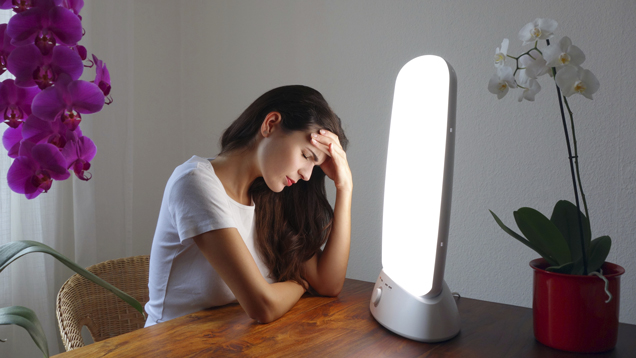Feeling SAD? Here's some brightening news
 CREDIT: ROCKY89 / ISTOCK / THINKSTOCK
CREDIT: ROCKY89 / ISTOCK / THINKSTOCKLight therapy may not be the best treatment for seasonal affective disorder. Try spending as much time outdoors in the daytime as possible to stave off seasonal depression.
Feeling a little under the weather with grey skies and snowy days? You’re not the only one.
With the weight of the world on a student’s shoulders, dealing with deadlines at school, work commitments and socializing whenever possible, seasonal affective disorder (SAD) is a common mental health issue people struggle with this time of year.
According to the Canadian Mental Health Association (CMHA), weather often affects people’s moods. While noticeable, these shifts in mood generally do not affect our ability to cope with daily life. CMHA said that some people are vulnerable to a type of depression that follows a seasonal pattern; shortening autumn days are the beginning of this type of clinical depression that can last until spring.
The big theory behind SAD is it is cyclical; the only thing that distinguishes it from other mental health issues is that it will go on for three to four month periods, then dissipate. More often than not, most people don’t report it because it does go up and down and lessens when the sun shines for longer periods in the spring and summer months.
Da Qing Wang, a mental health worker at CMHA and a Western Masters Counselling Psychology Candidate said that latitude is a determining factor with SAD. More people in North America suffer from SAD than in Europe.
According to WebMD, serotonin is a neurotransmitter that affects mood. When serotonin levels drop, this causes symptoms of SAD to increase. Reduced sunlight also plays a role in decreasing serotonin levels.
Melatonin can also be thrown off balance. Melatonin plays a role in sleep patterns and mood.
“With the shorter periods of sunlight, people tend to rush around,” Wang said. With less sun, this equates to less time to get stuff done, hence the feelings of being “too busy” and unfortunately, more stressed.
There is a pattern here: less sun, less time spent outdoors because it’s cold and dark and more feelings of stress, anxiety and pressure. Stressful nights lead to no sleep and the end result for some can be SAD.
“The go-to [SAD treatment] was light therapy, but research shows it’s not effective. It does not cure SAD, it’s better to use cognitive behavioural therapy,” said Wang.
Cognitive behavioural therapy states that thoughts, emotions and actions are all interconnected. If you change one thing, such as an action that is the easiest to change as Wang suggests, it will have a domino effect on all of them. Wang also suggested smiling more; research says if you force yourself to smile, you can trick your brain into believing you are happy.
How can you combat SAD? Make your environment brighter. Open up blinds, spend time outdoors and exercise to relieve stress and anxiety. You don’t need to run a marathon; simply getting out and walking outside before getting ready for class or walking outdoors to relax when you are studying or writing essays is fun and healthy for your body, mind and spirit.
Another wellness tip is to get more yoga and meditation in your schedule. Try spending time with friends walking around at Victoria Park, or joining a yoga class at your gym. There’s a reason why it’s trendy and hip; yoga and meditation feel good and give you that happy, healthy, relaxed mental calmness that can help you do better in school and get assignments done on time.
If you feel like you may be struggling with a mental illness please contact Counselling and Accessibility in F2010.














